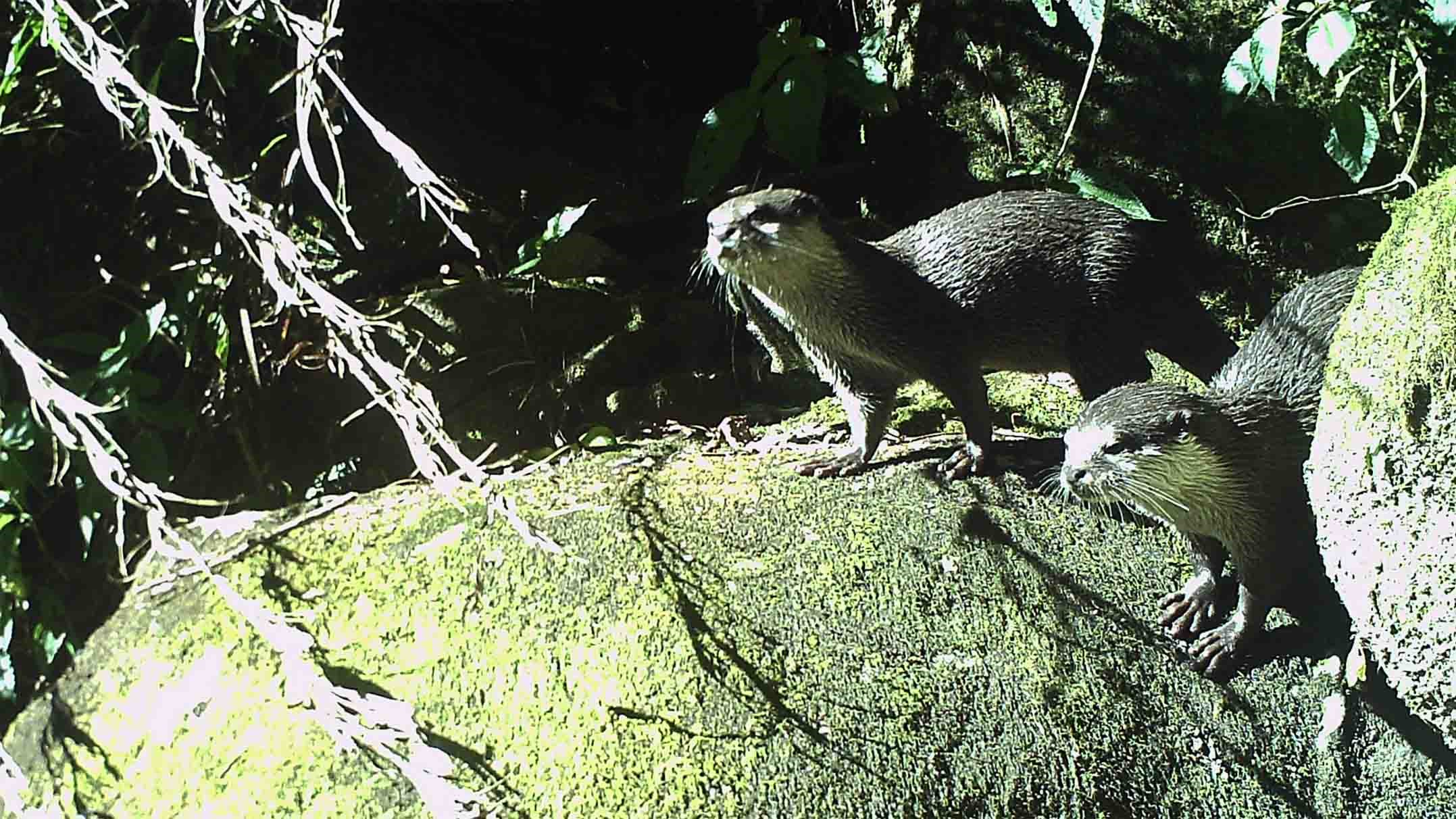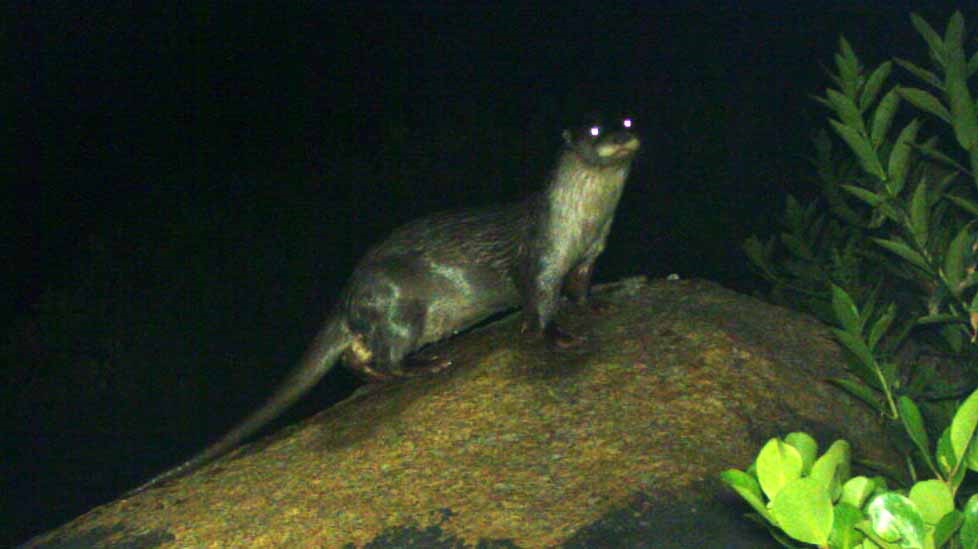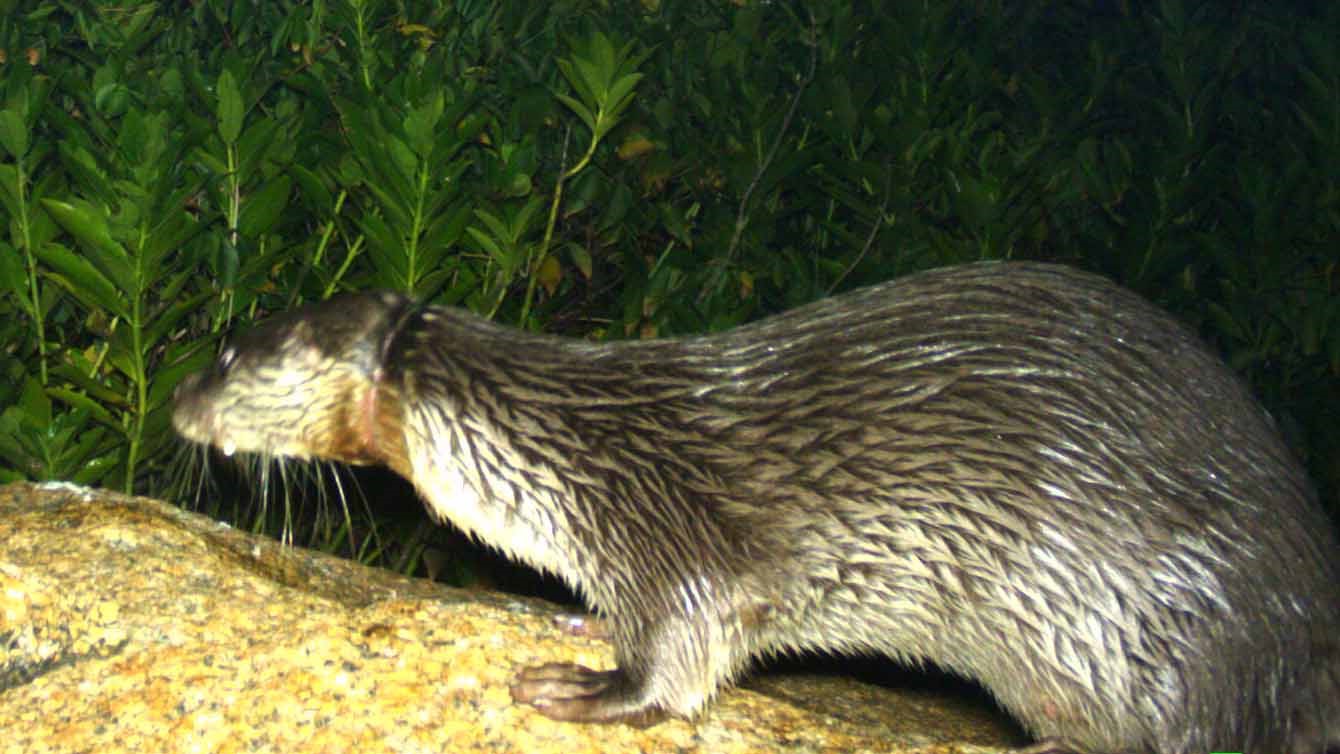Study shows that China’s otters are in dramatic decline
(HONG KONG, 4th July 2017) Otters are considered good indicator species for aquatic ecosystem health, but many populations are threatened, especially in Asia. A study recently published in the international conservation journal Oryx (DOI: https://doi.org/10.1017/S0030605317000400) shows that this charming group of amphibious mammals have undergone a dramatic countrywide decline in China, and are extirpated over much of their former ranges.
Three species of otters are known from China: the Eurasian otter (Lutra lutra), the Asian small-clawed otter (Aonyx cinereus) and the smooth-coated otter (Lutrogale perspicillata). According to the IUCN, global populations of the Asian Small-clawed otter and the smooth-coated otter have decreased by more than 30% in the past three decades, while the Eurasian otter is experiencing an ongoing population decline in China and Indochina. Historically, otters were excessively hunted in China for their furs and as traditional medicine; annual harvest in tens of thousands animals were reported by government statistics until otters became protected by law in 1989. The remaining otter populations, however, continue to plummet, as threats like wetland degradation, pollution and fish stock depletion worsen.
Conservationists from the Kadoorie Conservation China Department of the Hong Kong-based Kadoorie Farm & Botanic Garden (KFBG) have spent the last 5 years studying the conservation status of otters across China. The team conducted their research by a combination of field survey, literature review and expert interview throughout the country. Their results confirmed otters suffered a massive decline in China, and can only be confirmed at 19 sites across the country.
“Although other relict otter populations surely remain undetected in remote corners of this vast country, our study clearly indicates that otters are on the verge of extinction in China.”, said the Head of Kadoorie Conservation China Dr. Bosco Chan, who led the study.
“Luckily, small but stable otter populations survive in certain well-protected reserves, and where poaching is effectively controlled, even close to busy cities,” reported Li Fei, co-author of the scientific paper.
According to Dr. Bosco Chan, there is ample evidence that otters can recover from once extreme low numbers, as in Europe and America. “With some immediate and determined actions to protect the last populations of China’s otters and their habitats, we can bring them back on the brink of extinction,” he explained.
KFBG has been working with various partners in an effort to protect China’s otters. In early 2017, KCC established an otter monitoring team in a nature reserve on Hainan Island with the aim to protect the dwindling population of Asian small-clawed otter. They are also joining hands with the Otter Specialist Group of IUCN Species Survival Commission to hold the 14th International Otter Congress in China in 2019, to foster new interest and conservation effort in these overlooked animals in China.

The study obtained the first local photograph of wild Asian small-clawed otters at a remote stream in Yunnan Province. (Photo by KFBG)

A curious Eurasian otter in a busy bay of Guangdong Province, China. (Photo by KFBG)

A Eurasian otter strangled by a plastic waste in Guangdong Province, China. Pollution is one of the many threats China’s otters have to face. (Photo by KFBG)

